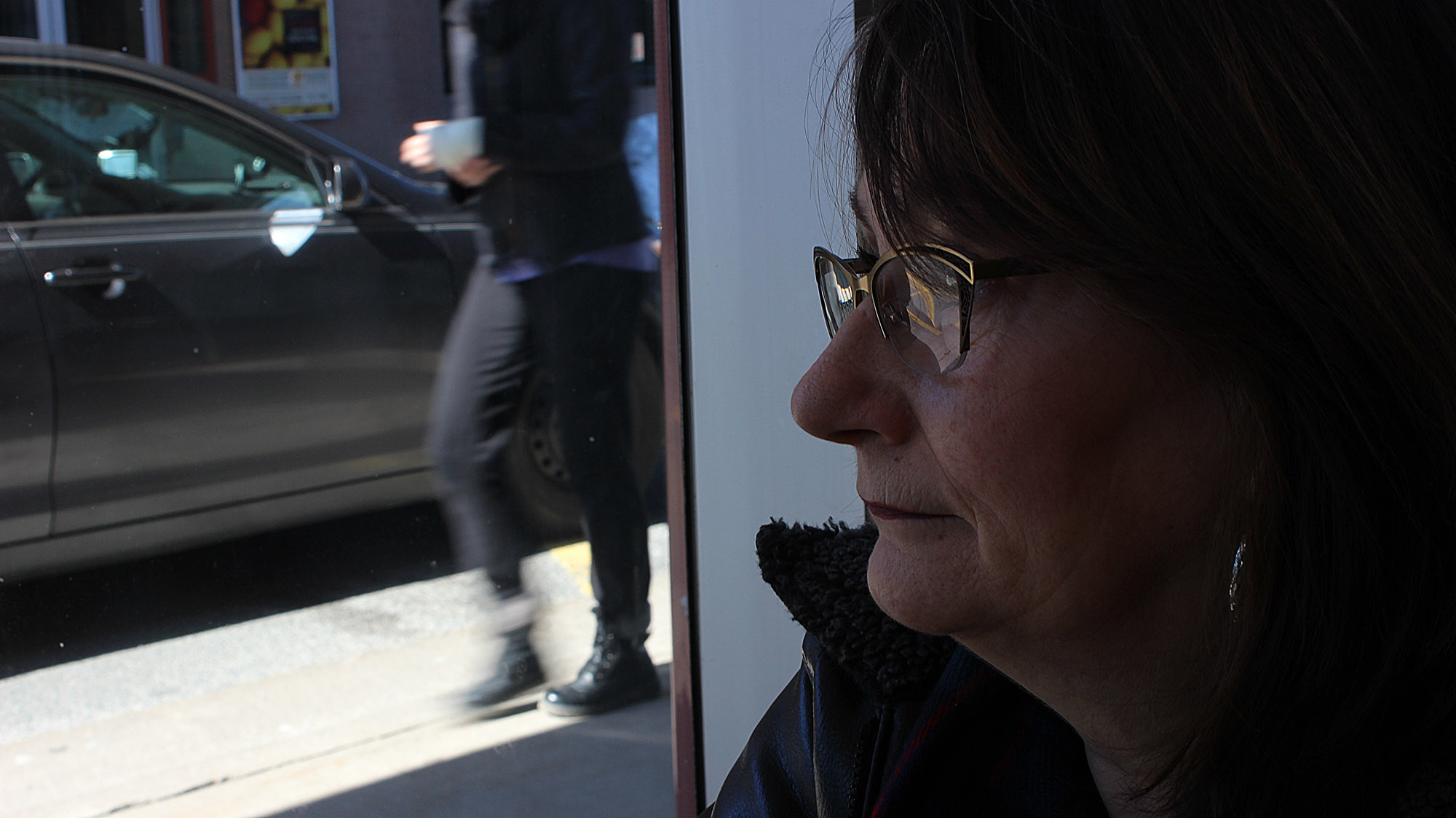Vital signs: Overlooking women’s heart health

caption
Susan Doyle thinks there's still research to be done in women's heart healthBeing female with heart attack history is 'scary,' says survivor
Feb. 27, 2018, around 11 a.m. While out for her daily walk, Susan Doyle felt an extreme pain creep across the front of her body and a tight feeling in her chest. She knew what was going down; she was having a heart attack, more than a decade after her first.
Knowing what to do, Doyle drove herself to her family doctor and asked for an EKG – an electrocardiogram – and bloodwork to test her levels of troponin, an enzyme that the body releases when there’s damage to the heart. The initial pain was gone, but Doyle was finding it hard to breathe with the squeezing sensation in her chest. Of course, she was having a heart attack, right? This wasn’t her first time at the heart-health rodeo, after all, since her first attack in 2007 prepped her for what she needed to look out for and what she needed to do – and how fast to do it.
When the tests came back, there were no irregularities, apart from slightly raised blood pressure.

caption
By showing irregular symptoms, women like Doyle can be taken less seriously by heart health professionals.Her doctor “didn’t think I had a heart attack,” Doyle said, recounting the events that took place that day. After returning home, she gave herself some nitro spray under her tongue, which Canada’s Heart and Stroke Foundation describes as a form of nitrate that relieves chest and heart attack pain by widening blood vessels, putting the heart under less stress when pumping blood to the rest of the body. Doyle still felt a tightness around her heart.
Close to suppertime, with the heavy squeezing feeling still in her chest, Doyle said to her husband, “I think you better call 911.”
The foundation’s findings
In 2018, the Heart and Stroke Foundation, an organization founded in 1952 to pursue research in the evolving field of heart health, published a report that found women are under-represented in the research for treatments and the signs and symptoms of heart trouble in women are misunderstood.
The report, aptly titled Ms. Understood, identified heart disease as the leading cause of premature death for Canadian women and concluded that early signs of a heart attack weren’t picked up on in more than three-quarters of women. The report goes on to suggest that women in heart health research are, as Dr. Sharon Mulvagh, a non-invasive cardiologist and a co-director of the Women’s Heart Health Clinic with the Halifax Infirmary, describes as “the five unders: under-aware, under-diagnosed, under-treated, under-researched, and under-supported.”
The foundation, in its 2019 heart report, adds important Canadian statistics:
- in 2016, 22 per cent more women than men died of heart conditions and strokes;
- women diagnosed with heart failure are six times as likely to be at risk of atrial fibrillation, a condition where the atria of the heart beats at an abnormally fast pace;
- 45 percent more women than men die of a stroke, and since women tend to have a longer life expectancy than men, more women live with the effects of a stroke longer than men;
- more women suffering from heart conditions also have hypertension, or high blood pressure; and 23 per cent more women than men die of heart failure.
With the statistics against her, Doyle was now in a fight for her health care, waiting for a medical professional to find something to prove she had had a heart attack.
‘I had no EKG changes’
In the ambulance, paramedics performed another EKG but, like Doyle’s family doctor, they weren’t finding anything out of the ordinary, outside of the slightly elevated blood pressure. Looking at her history of heart attacks, the decision was made to admit her to a hospital for further screening. While there, Doyle’s bloodwork results came back and showed an elevated level of troponin, indicating that, yes, she had had a heart attack.
So why did it take so long to determine whether she had a heart attack?

caption
The Halifax office of the Heart and Stroke Foundation, which is encouraging research into why more women are having heart attacks.With women lacking in representation in heart research, it mainly stems from a drug crisis that happened in the early 1960s, when pregnant women used thalidomide during pregnancy that caused many children to be born with limb deformities. After this, the medical field decided it was best to assume all women pre-menopause were carrying a child and prohibited a large population of women to participate in health-related studies. The main issue here is that Health Canada did not include women in health studies until they reviewed its guidelines in 1997 to make research participants in medical trials more inclusive and safer, according to the Heart and Stroke Foundation.
“Nobody ever really looked at the data,” said Dr. Mulvagh. “Under 55, about two-thirds of the people that have heart attacks are men and maybe about a third are women, but the problem is that that third is increasing, and frequently, wasn’t even recognized.”
On TV, when you see heart attacks, you see somebody immediately grabbing their chest and they’re screaming and they drop to their knees, and none of my heart attacks have been any of that Susan Doyle
The second problem that the foundation addresses in the report is that women often go undiagnosed for any kind of heart disease and do not get the treatment they need. These problems seem to stem from gender biases and certain cultural differences between men and women.
One example that Ms. Understood presents is the idea of language, that women would describe the most common symptom of a heart attack, chest pain, somewhat plainly, like how Doyle described her pain as a tight sensation, while men would use more emotional and hyperbolic language, like comparing their chest pain to being punched in the heart 400 times by an Olympic boxer. Because of instances like this apparent language difference, common symptoms in women are often cast aside as minor conditions either by themselves or by medical professionals, where men who experience the same symptoms are taken more seriously.

caption
Dr. Sharon Mulvagh says the “Hollywood heart attack” is the learning basis in medical schools.“On TV, when you see heart attacks, you see somebody immediately grabbing their chest and they’re screaming and they drop to their knees, and none of my heart attacks have been any of that,” Doyle said, commenting on different reactions people can have in response to common heart attack symptoms. Dr. Mulvagh also comments on the idea of a “Hollywood heart attack” and that it’s still a prime learning tool in medical school classrooms.
The foundation also addresses the issue of a lack of support for women with heart conditions by looking at the studies of Dr. Sherry Grace, a York University professor and senior scientist at the Toronto Rehabilitation Institute, who noticed that fewer women were taking advantage of cardiac rehabilitation programs. Also, women often take on the part of a caregiver in a household, whether that be to children and grandchildren or to elderly parents, and there’s a cultural expectation that women and mothers must give up their wants and needs for the sake of their family.
Ms. Understood cites the story of Beth Luhowy, who experienced major feelings of guilt when she took time off work to join a cardiac rehabilitation program. “I felt very selfish doing something strictly for me. It was only going through the program that I realized I would be more selfish if I didn’t do this. I’m not going to be good for anyone else if I’m not taking care of myself.”
It’s very scary. This past year, I’ve been having symptoms and I have gone to the ER numerous times with symptoms that were very much like my heart attack, and very much like a precursor to my heart attack last year, and because I don’t have elevated troponins, I’m being sent home Susan Doyle
Lastly, the foundation’s report talks about how women appear to be unaware and uneducated in their own heart health and that heart diseases can pose a serious risk. Surveys conducted as part of the Ms. Understood report found that the groups that seem the least aware of heart health issues are younger women, women who belong to a visible minority and women who live in Quebec: only 37 per cent of women ages 19 to 29 believe that there could be gender differences in heart health; just under half of women of a visible minority knew that nine out of 10 women show at least one risk factor of heart disease; and 39 per cent of Quebec women could correctly answer only four out of 12 questions about basic heart health.
Even though Doyle has had heart attacks, she says much of this was news to her.
The missing gender equality in heart disease research and awareness? “I just found that out, actually, when I went through my cardiac rehab program.”
So, what can be done? “More research,” said Doyle, and the foundation agrees. It not only wants to do more research into women’s heart health, but also invest money into that research so it can have a greater impact on the issues that women are dealing with medical professionals about their heart health. They also intend to come up with specific guidelines inspired by researchers of and those affected by women’s heart diseases to improve the rate of diagnosis and encourage the proper treatment for heart conditions in women, then build upon that community to expand things like support groups and increase the overall awareness that there are differences between men and women when it comes to heart health.

caption
Doctors are leaving women such as Susan Doyle out of serious heart health discussions, according to the Heart and Stroke Foundation.The foundation wants to “mobilize people in Canada to take action in support of better women’s heart health” by inspiring to learn what they can and ask their health-care providers as many questions as possible to better understand heart health. It also plans to expand and improve its services for women of Indigenous, South Asian, Chinese and Afro-Caribbean backgrounds, as the foundation cites these groups as one that experience higher rates of heart disease and problem getting heart conditions diagnosed.
Women who have had heart attacks can do their part. For example, Dr. Mulvagh recommends for women to check out various resources available, such as the Canadian Women’s Heart Health Alliance, a national group where “women with lived experience” can learn about the various gender-related differences. Women can also learn how to talk to doctors. According to Dr. Mulvagh, doctors tend to not talk about heart conditions with their women patients because there is a decreased overall risk of conditions like heart attacks, despite the fact the risk is increasing and more medical research starting to investigate the cause of it.
“It’s very scary,” Doyle says. “This past year, I’ve been having symptoms and I have gone to the ER numerous times with symptoms that were very much like my heart attack, and very much like a precursor to my heart attack last year, and because I don’t have elevated troponins, I’m being sent home.”
While she has not had another heart attack, “there’s something going on with my heart,” she adds. “Will I live for them to fix it or finally determine what it is, or not?”
About the author

Justin Gollop
SMU grad (BA ‘18), journalist for The Signal, breakfast enthusiast, and friendly neighbourhood note-taker.

d
denise Horne